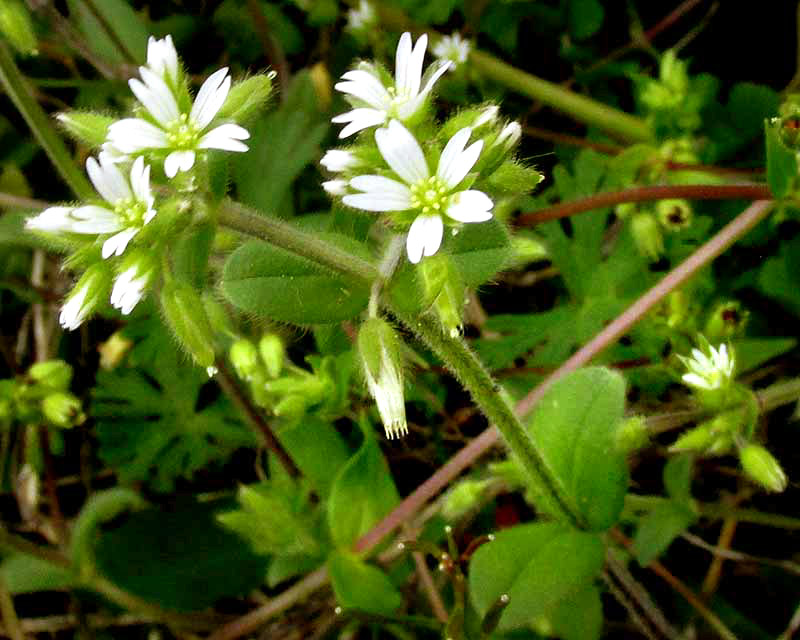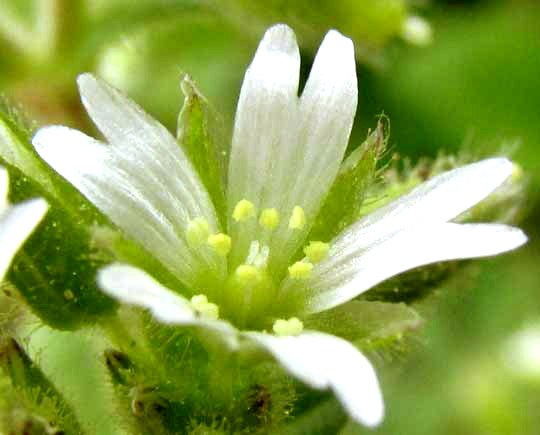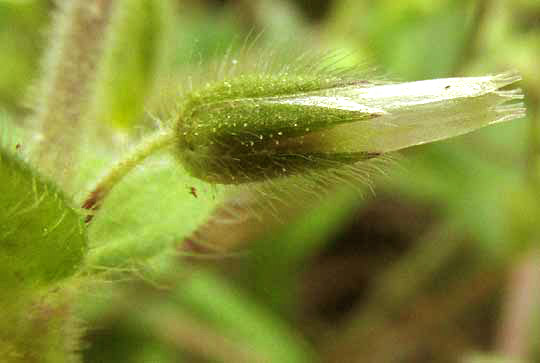Excerpts from Jim Conrad's
Naturalist Newsletter

page April 19, 2015 Newsletter issued from Calhoun, McLean County, Kentucky, USA
MOUSE-EAR CHICKWEED
Nowadays roadsides and certain lawns are prettily white-speckly with tiny, white blossoms of the Common Chickweed, illustrated and described at http://www.backyardnature.net/n/h/chickwee.htm.
If those same roadsides and lawns are a little wilder than usual, you might see a little herb that looks very much like Common Chickweed, except that it's larger, including its flowers. At the top of this page you can see this larger plant, with a tangle of smaller Common Chickweeds in the background.
Like the Common Chickweed's flowers, these larger blossoms bear petals that are deeply notched at their tips, as shown below:

However, the capsular fruits of Common Chickweed are shaped like long eggs -- they're ovoid-oblong -- while this plant's capsules are cylindrical. Below, you can see one of this plant's old, cylindrical capsules that has split open at its tip:

This larger roadside herb belongs to the same family as the Common Chickweed, which is the Pink or Carnation Family, the Caryophyllaceae, but its cylindrical capsule is one feature that puts it into a different genus, the genus Cerastium.
But, the Flora of North America treats 27 Cerastium species, so which is this?
The plant's being an annual instead of a perennial, its flower's five styles, and the dense covering of long, often gland-tipped hairs on its body are among features making this the Sticky Mouse-ear Chickweed, CERASTIUM GLOMERATUM. Sticky Mouse-ear Chickweeds are Eurasian in origin but now they're found along roads, in fields and on abandoned land throughout North America, except the north-central parts.
You can imagine that small, ground-hopping, seed-eating birds might peck at tiny seeds that tumble from the cylindrical fruit pod. B.E. Reid's Famine Foods of the Chiu-Huang Pen-ts'ao reports that Sticky Mouse-ear Chickweed's leaves and stems are edible, though the plants are so tough and stringy that I can't imagine their being eaten by anyone not terribly hungry. N.P. Manandhar's Plants and People of Nepal reports that juice of the plant can be applied to the forehead to relieve headaches, and that the juice dropped into a nostril can treat a nosebleed.